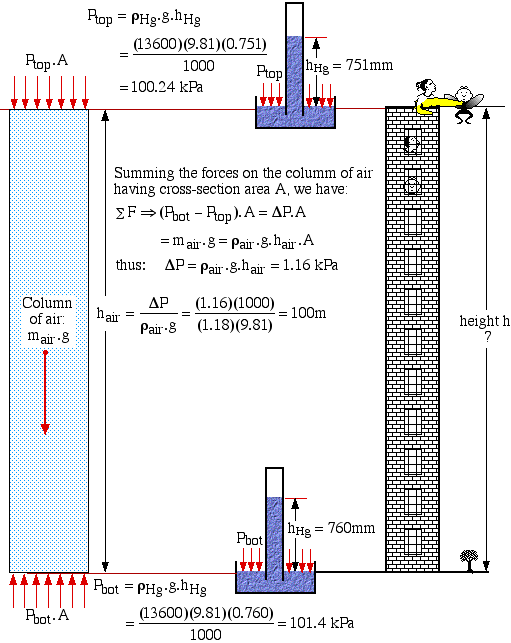
Solved Problem 1.1 - Using a Barometer to determine the Height of a Building
In this problem we use the basic mercury barometer to determine the height of a building. Consider the case that the barometer reading at the top of the building is 751 mm Hg, and at the bottom of the building is 760 mm Hg. Assume the density of mercury ρHg = 13,600 kg/m3, and that the average density of the column of air ρair = 1.18 kg/m3.
The approach to solution is illustrated in the following diagram. A free-body force diagram on the column of air allows us to determine the height as a function of the pressure difference ΔP from top to bottom.
Well, exactly 100m? - obviously this is a contrived example. When we first evaluated the height we came up with the result:
In Engineering Thermodynamics we normally present results to within 3 or 4 significant digits. The question that one really should ask is "Is this a reasonable method to measure the height of a building?" and the answer is a resounding NO! In the following we do an uncertainty analysis and find that unless we also measure the air temperature during this experiment (why? temperature doesn't even appear in the above equations!) then this method has an accuracy of:
height = 100 ± 42 m
Unacceptable by any standards.
Digression - Uncertainty Analysis of Determining a Building Height using a Barometer
______________________________________________________________________________________
![]()
Engineering Thermodynamics by Israel
Urieli is licensed under a Creative
Commons Attribution-Noncommercial-Share Alike 3.0 United States
License